Transportation and logistics solutions provider Universal Logistics (NASDAQ:ULH) fell short of the market’s revenue expectations in Q1 CY2025, with sales falling 22.3% year on year to $382.4 million. Its GAAP profit of $0.23 per share was 52.1% below analysts’ consensus estimates.
Is now the time to buy Universal Logistics? Find out in our full research report .
Universal Logistics (ULH) Q1 CY2025 Highlights:
"Our performance in the first quarter reflects the sluggish start to 2025," stated Universal's CEO Tim Phillips.
Company Overview
Founded in 1932, Universal Logistics (NASDAQ:ULH) is a provider of customized transportation and logistics solutions operating throughout the United States and in Mexico, Canada, and Colombia.
Ground Transportation
The growth of e-commerce and global trade continues to drive demand for shipping services, especially last-mile delivery, presenting opportunities for ground transportation companies. The industry continues to invest in data, analytics, and autonomous fleets to optimize efficiency and find the most cost-effective routes. Despite the essential services this industry provides, ground transportation companies are still at the whim of economic cycles. Consumer spending, for example, can greatly impact the demand for these companies’ offerings while fuel costs can influence profit margins.
Sales Growth
A company’s long-term sales performance can indicate its overall quality. Any business can experience short-term success, but top-performing ones enjoy sustained growth for years. Over the last five years, Universal Logistics grew its sales at a sluggish 2.7% compounded annual growth rate. This fell short of our benchmarks and is a rough starting point for our analysis.
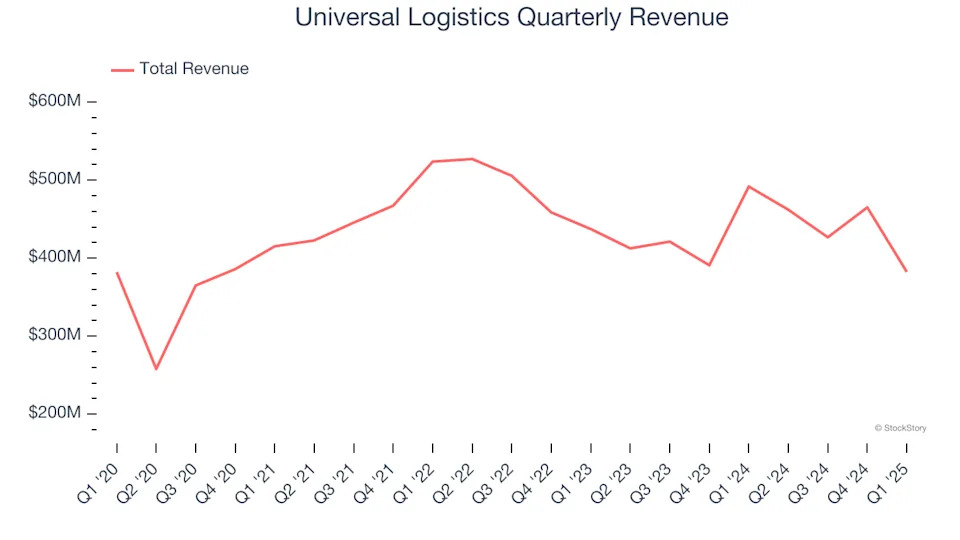
We at StockStory place the most emphasis on long-term growth, but within industrials, a half-decade historical view may miss cycles, industry trends, or a company capitalizing on catalysts such as a new contract win or a successful product line. Universal Logistics’s performance shows it grew in the past but relinquished its gains over the last two years, as its revenue fell by 5.1% annually. Universal Logistics isn’t alone in its struggles as the Ground Transportation industry experienced a cyclical downturn, with many similar businesses observing lower sales at this time.
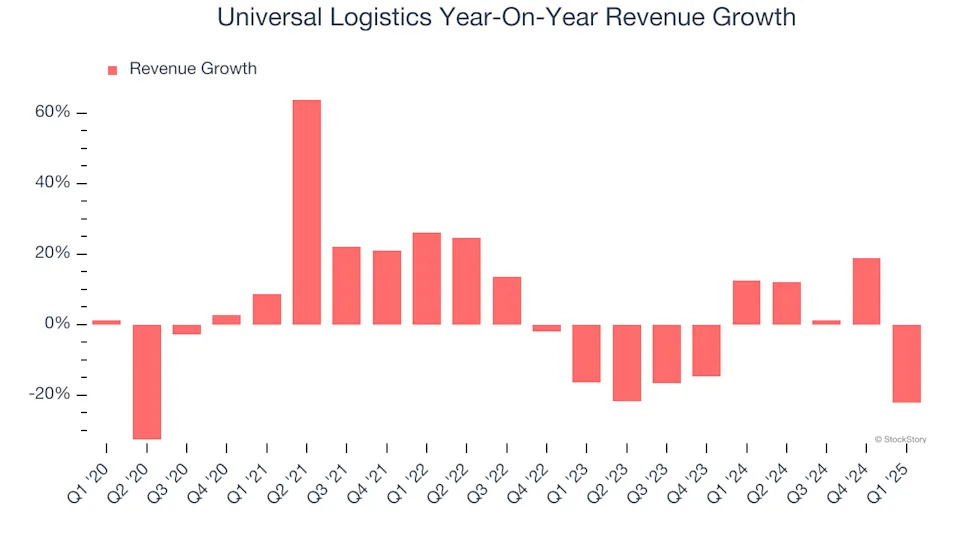
This quarter, Universal Logistics missed Wall Street’s estimates and reported a rather uninspiring 22.3% year-on-year revenue decline, generating $382.4 million of revenue.
Looking ahead, sell-side analysts expect revenue to grow 1.8% over the next 12 months. While this projection suggests its newer products and services will catalyze better top-line performance, it is still below average for the sector.
Unless you’ve been living under a rock, it should be obvious by now that generative AI is going to have a huge impact on how large corporations do business. While Nvidia and AMD are trading close to all-time highs, we prefer a lesser-known (but still profitable) stock benefiting from the rise of AI. .
Operating Margin
Universal Logistics has done a decent job managing its cost base over the last five years. The company has produced an average operating margin of 9.1%, higher than the broader industrials sector.
Analyzing the trend in its profitability, Universal Logistics’s operating margin rose by 2.9 percentage points over the last five years, as its sales growth gave it operating leverage.
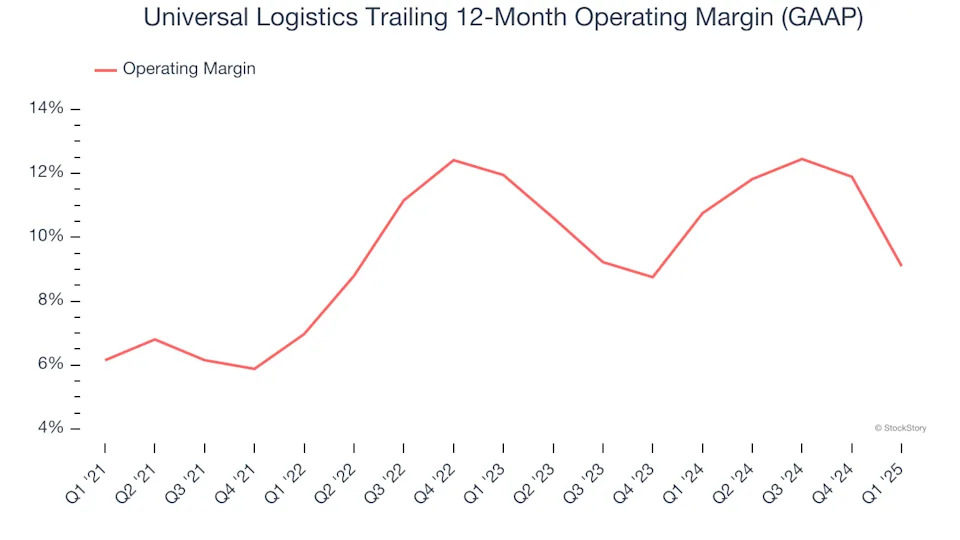
In Q1, Universal Logistics generated an operating profit margin of 4.1%, down 11.6 percentage points year on year. Since Universal Logistics’s operating margin decreased more than its gross margin, we can assume it was less efficient because expenses such as marketing, R&D, and administrative overhead increased.
Earnings Per Share
Revenue trends explain a company’s historical growth, but the long-term change in earnings per share (EPS) points to the profitability of that growth – for example, a company could inflate its sales through excessive spending on advertising and promotions.
Universal Logistics’s EPS grew at an astounding 22.1% compounded annual growth rate over the last five years, higher than its 2.7% annualized revenue growth. This tells us the company became more profitable on a per-share basis as it expanded.
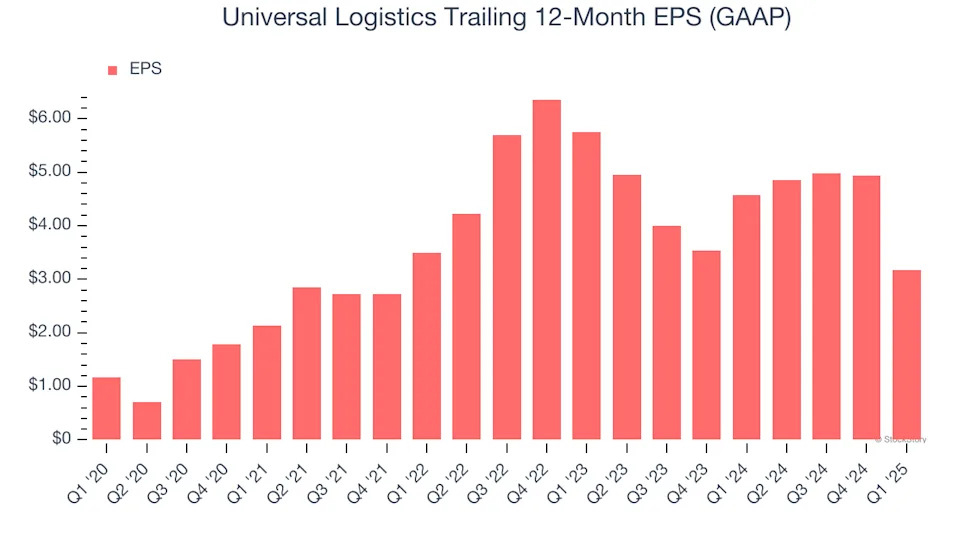
We can take a deeper look into Universal Logistics’s earnings to better understand the drivers of its performance. As we mentioned earlier, Universal Logistics’s operating margin declined this quarter but expanded by 2.9 percentage points over the last five years. Its share count also shrank by 3.2%, and these factors together are positive signs for shareholders because improving profitability and share buybacks turbocharge EPS growth relative to revenue growth.
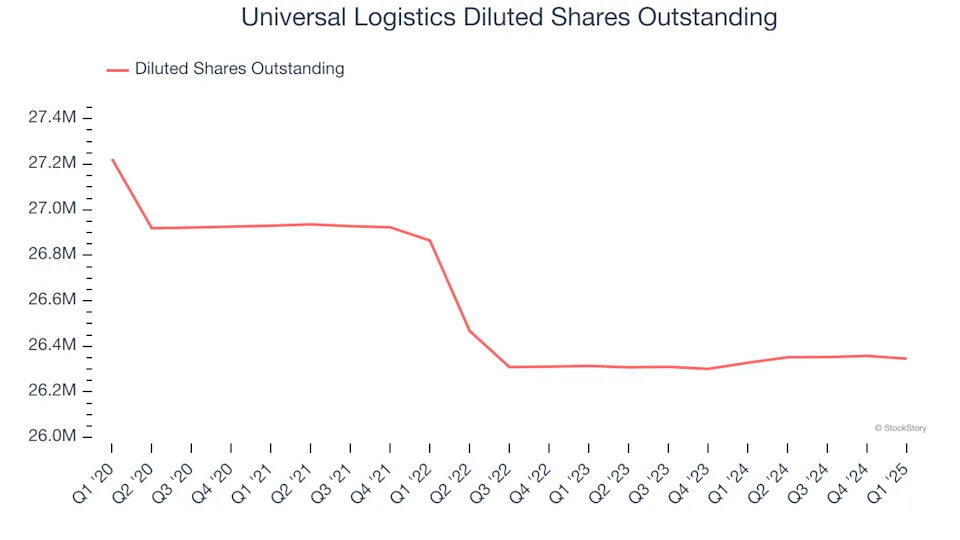
Like with revenue, we analyze EPS over a shorter period to see if we are missing a change in the business.
For Universal Logistics, its two-year annual EPS declines of 25.6% mark a reversal from its (seemingly) healthy five-year trend. We hope Universal Logistics can return to earnings growth in the future.
In Q1, Universal Logistics reported EPS at $0.23, down from $1.99 in the same quarter last year. This print missed analysts’ estimates, but we care more about long-term EPS growth than short-term movements. Over the next 12 months, Wall Street expects Universal Logistics’s full-year EPS of $3.18 to stay about the same.
Key Takeaways from Universal Logistics’s Q1 Results
We struggled to find many positives in these results. Its revenue missed significantly and its EBITDA fell short of Wall Street’s estimates. Overall, this quarter could have been better. The stock remained flat at $26.81 immediately following the results.
Universal Logistics’s earnings report left more to be desired. Let’s look forward to see if this quarter has created an opportunity to buy the stock. What happened in the latest quarter matters, but not as much as longer-term business quality and valuation, when deciding whether to invest in this stock. We cover that in our actionable full research report which you can read here, it’s free .

